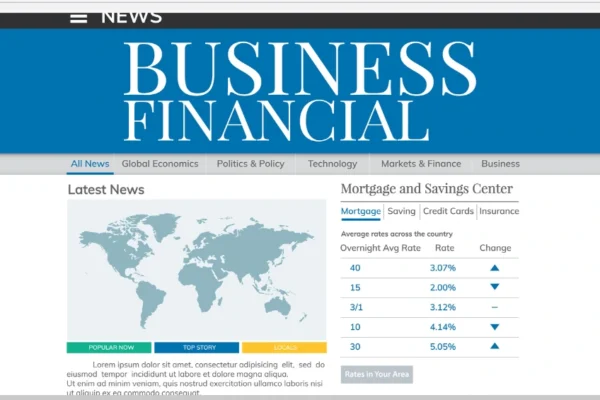In today’s business landscape, most companies proudly display their ethical guidelines and values. However, not all codes are crafted with genuine integrity and effectiveness in mind. Bad business codes—those poorly constructed, inadequately implemented, or disingenuously promoted—can spell serious trouble, impacting not just reputation but also your company’s financial health. In this comprehensive 1500‑word exploration, we’ll dissect the multifaceted ways bad business codes can undermine profitability, deter investment, spur fines, and erode trust among stakeholders. By understanding these risks and taking strategic action, leaders can turn weak policies into strong safeguards that protect both values and the bottom line.
1. Defining ‘Bad Business Codes’
Bad business codes refer to company policies or ethical guidelines that are:
-
Vague or overly general
-
Poorly communicated or selectively enforced
-
Superficially designed to “check a box” without real commitment
-
Inconsistent with company culture and practices
-
Out of sync with industry regulations and expectations
Unlike strong codes that guide behavior and decision-making, bad business codes give a false sense of security and may even invite unethical behavior disguised as compliance.
2. Cultural Disconnect: When Codes Don’t Matter
One of the first warning signs of bad business codes is when employees disregard them without consequence. If leadership fails to model the guidelines or when infractions go unpunished, workers quickly learn that the code exists in name only.
This disconnect fosters a toxic environment where employees believe they can act unethically with impunity. Over time:
-
Fraud, theft, and corruption may grow
-
Internal morale and loyalty suffer
-
Whistleblower reports decline due to fear or futility
All these issues, stemming from bad business codes, add overhead, disrupt operations, and increase the risk of costly scandals.
3. Regulatory and Legal Exposure
Regulatory bodies and public scrutiny are stepping up around the world. A bad business code may leave your company exposed in several ways:
-
Compliance Gaps: If your code fails to reflect updated laws—like anti‑money laundering, data privacy regulations (GDPR, CCPA), or industry‑specific rules—you risk unintentional violations.
-
Weak Accountability: Without clear enforcement, you can’t demonstrate due diligence, making it easier for authorities to assert willful negligence.
-
Severe Penalties: Notorious corporate fines—think Volkswagen emissions, Wells Fargo account fraud—show how weak oversight can translate into billions in financial damage.
Fines, legal settlements, and expensive compliance overhaul programs all result from bad business codes that don’t hold up under inspection.
4. Reputation and Customer Trust
A strong reputation is a company’s most valuable intangible asset—and it’s fragile. When bad business codes loom large:
-
The media exposes unethical behavior that the company failed to mitigate
-
Customers shift to competitors perceived as more ethical
-
Institutional investors divest from firms lacking integrity
A damaged reputation can reduce sales, lower valuations, raise borrowing costs, and impact access to capital, all driven by the initial weakness in your code of conduct.
5. Employee Drain and Talent Costs
Top talent seeks employers whose values align with their own. When bad business codes cause workplace toxicity:
-
High performers leave in search of more principled organizations
-
Recruiting costs rise as prospective hires conduct due diligence
-
Engagement drops, leading to reduced productivity
Replacing experienced employees is costly—often 1.5 to 2x their annual salary. The root often lies in code–culture mismatch, a hallmark of bad business code.
6. Investor Confidence and ESG Pressure
Today’s investors pay close attention to ESG (Environment, Social, Governance) metrics. A company with bad business codes signals poor governance that can erode investor confidence. Consequences include:
-
Lower stock prices and greater volatility
-
Reduced access to financing or unfavorable loan terms
-
Increased activism or governance scrutiny from stakeholders
Without a robust code and visible enforcement, even businesses with strong fundamentals may be penalized under investor risk models.
7. Operational Inefficiencies and Hidden Costs
Bad business codes don’t just cause scandals—they hide inefficiencies:
-
Confusion over acceptable behavior leads to micromanagement
-
Decision delays as staff seek unclear approvals
-
Redundant oversight when no one takes ownership
-
Inconsistent client treatment and service standards
These less visible costs erode margins and reduce competitiveness across the board.
8. Digital and Data Risks
In the age of digitization, companies depend heavily on data integrity and cybersecurity. A bad business code that overlooks:
-
Employee conduct around data handling
-
Third-party vendor protocols
-
Incident reporting and authentication processes
…can lead to breaches, fines, and loss of customer trust. A single ransomware attack or data leak can cost millions, triggered by policies that never fully empower staff to act responsibly.
9. How to Identify Bad Business Codes
To prevent these risks, leadership should conduct regular audits for warning signs of bad business practices:
-
Are policies unclear or excessively broad?
-
Do exceptions and loopholes abound?
-
Is management inconsistent in enforcing standards?
-
Do employees view the code as irrelevant or outdated?
-
Does the code ignore modern threats like ESG, data privacy, and digital ethics?
Spotting these clues early can save far more than updating documents—it recalibrates culture and finances before damage occurs.
10. Transforming Weak Codes into Strong Foundations
Companies ready to rectify bad business codes should follow a strategic roadmap:
-
Engage Leadership and Culture Teams
Ensure executives model the behavior. Tone from the top is critical. -
Involve Stakeholders Across Levels
Gather input from employees, customers, vendors, and regulators to improve relevance and buy-in. -
Clarify Purpose and Principles
Define not just what is prohibited, but why; illustrate real-world scenarios and guideposts. -
Design Clear Enforcement Mechanisms
Assign accountability, transparent incident tracking, and consistent disciplinary measures. -
Integrate with Training and Communication
Make ethics part of onboarding, ongoing training, and daily updates. -
Monitor, Audit, and Refresh
Maintain a living code: learn from incidents, update regularly, and keep all stakeholders informed. -
Link to Performance and Rewards
Recognize ethical decision-making and incorporate compliance into evaluations.
11. Benefits of a Strong, Ethical Code
Replacing bad business codes with strong ethics policies yields tangible benefits:
-
Reduced legal and compliance expenses
-
Boosted revenue from customer loyalty
-
Higher employee retention and productivity
-
Improved investor and lender confidence
-
Nimble response to digital and ESG challenges
In short, transforming misplaced guidelines into robust governance systems saves real money and secures long-term resilience.
12. Case Study: From Bad Codes to Best Practices
Consider a mid-size manufacturing firm that once suffered repeated safety incidents due to a bad business code. Workers ignored safety rules with no repercussions, and managers prioritized output over compliance. After multiple OSHA fines:
-
Leadership redesigned its code with explicit safety standards
-
Introduced transparent reporting channels
-
Enabled anonymous whistleblowing
-
Tied safety metrics to performance incentives
Within two years, incident rates dropped by 70%, insurance premiums fell, and revenue increased, transforming a financial drain into a competitive advantage.
Conclusion
Bad business codes can quietly corrode a company’s financial health, reputation, and future prospects. They create environments ripe for legal non-compliance, employee disengagement, digital risk, and cultural decay. The good news? These problems are fixable.
By auditing policies, aligning values and behavior, setting clear rules and consequences, and embedding ethics into daily operations, companies can convert weak codes into strong governance. That protects against financial risk, strengthens brand value, and enhances attractiveness to employees, customers, and investors.
Your code of conduct isn’t just a handbook—it’s a pillar of financial stability. If your code is a weak link, the time to act is now. Prioritize ethical clarity and sound governance, because when business codes are good, financial health follows.








